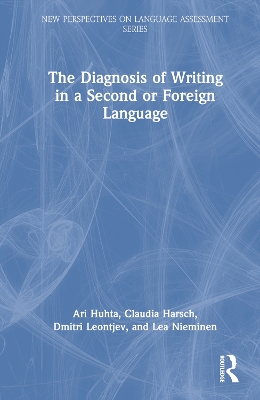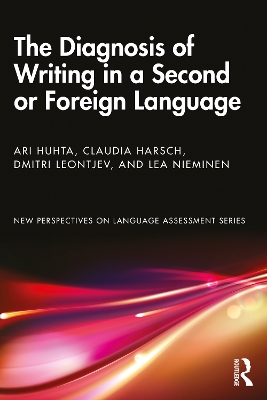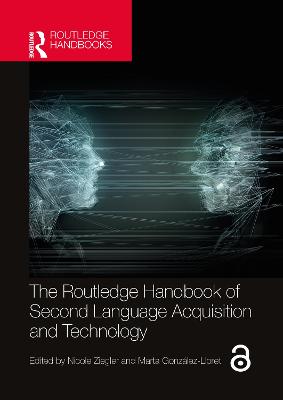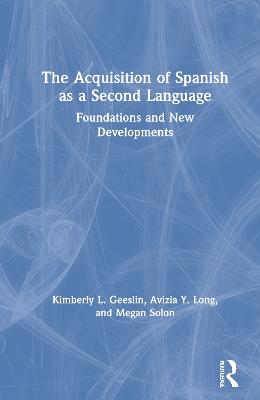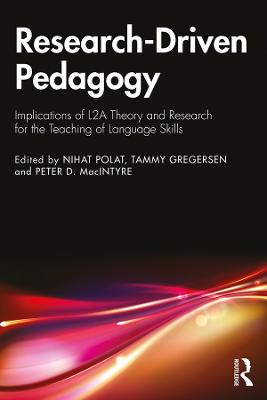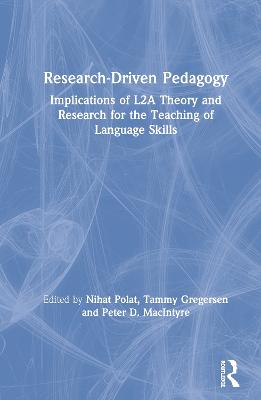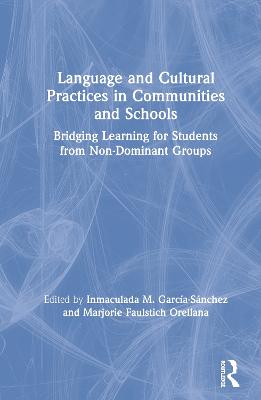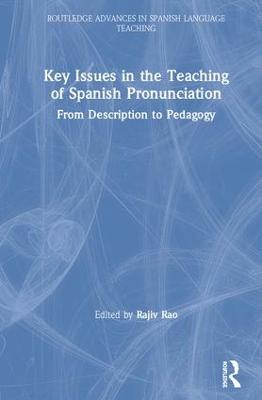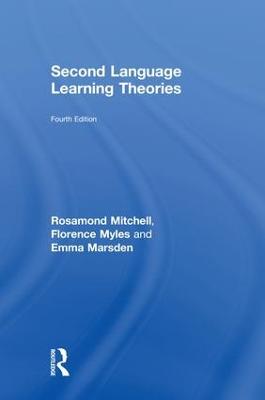Acquisition of Spanish as a Second Language
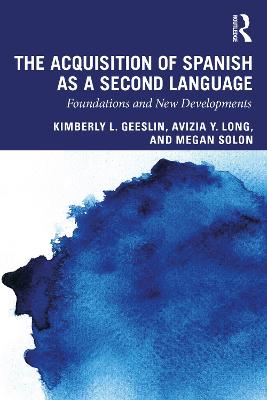 -10%
portes grátis
-10%
portes grátis
Acquisition of Spanish as a Second Language
Foundations and New Developments
Long, Avizia Y.; Solon, Megan; Geeslin, Kimberly L.
Taylor & Francis Ltd
04/2021
406
Mole
Inglês
9781138920354
15 a 20 dias
620
PART I: Fundamentals of Research on the Acquisition of Spanish as a Second Language
Chapter One: Introduction to Perspectives on Second Language Acquisition
Introduction
The Study of Second Language Acquisition
What is a Second Language Learner?
How are Second Languages Different from Additional (Third, Fourth, Fifth, etc.) Languages?
Why is Second Language Spanish Important?
What does It Mean to "Know" a Language?
Historical perspectives
Cognitive Approaches to Second Language Acquisition
The Relationship of Social and Linguistic Factors to Language Acquisition
Key Developments in the Field of Second Language Acquisition
Common Paths of Development
Influence of the First Language
Importance of Input
Influence of Linguistic Factors, Learner Characteristics, and Social Context
The Contributions of Technology in Advancing Research on Second Language Acquisition
Summary: Critical Considerations in Assessing Research in Second Language Acquisition
Conclusion
Note
Reading beyond the Text
Comprehension
Chapter Two: Research Methods
Introduction
What Is Linguistic Data?
How Do We Characterize Linguistic Data?
What Types of Linguistic Data Do Second Language Researchers Use?
How Do We Get Linguistic Data?
Eliciting Production Data
Oral interviews
Prompt-based writing
Picture description or narration
Other types of guided production
Highly-controlled production
Interaction-based elicitation
Eliciting Judgement and Interpretation Data
Psycholinguistic Measures
What Do We Do with Linguistic Data?
Non-Linguistic Data
Conclusion
Notes
Reading beyond the Text
Comprehension
PART II. Central Issues in Second Language Acquisition and Case Studies of Spanish
Chapter Three: First Language Influence and the Acquisition of /b d g/
Introduction
The Role of First Languages in Second Language Acquisition
What is Cross-Linguistic Influence?
Historical Perspectives: The 1950's
Historical Perspectives: Generative Grammar
Current Research Goals and Perspectives
Test Case from Spanish: The Acquisition of /b d g/
/b d g/ in Spanish
The Challenge for English-speaking Learners of Spanish
Research on /b d g/ in Second Language Spanish
Stages of Development of /b d g/
The Role of Instruction and Study Abroad
Connections
Additional Spanish Sounds
Connections beyond the Sound System
Conclusion
Reading beyond the Text
Comprehension
Chapter Four: Developmental Paths and the Acquisition of Copula Contrast
Introduction
Universal Patterns in the Path to Acquisition of a Second Language
Early Work: Morpheme Acquisition Studies
Explaining the Order of Acquisition
Criticism of the Morpheme Acquisition Studies
Test Case from Spanish: The Acquisition of Ser and Estar
The Copula Contrast in Spanish
Challenges for English-Speaking Learners of Spanish
Research on the Acquisition of Ser and Estar
Stages of Development of Copula Acquisition
Additional Learners and Learning Contexts
Stages within the [Copula + Adjective] Context
Connections
Additional Structures: Spanish Number and Gender
Connections to the Field of Second Language Acquisition
Conclusion
Notes
Reading beyond the Text
Comprehension
Chapter Five: Form-Meaning Mapping and the Acquisition of Past-Time Marking
Introduction
Form-Meaning Mapping
What is Form-Meaning Mapping?
Universal Strategies
Variation as Hypothesis Testing
Test Case from Spanish: The Acquisition of Preterit and Imperfect
The Preterit and Imperfect in Spanish
Challenges for English-speaking Learners of Spanish
Research on the Acquisition of the Preterit and Imperfect
Lexical Aspect in Preterit/Imperfect Form-Meaning Mapping
Additional Factors Affecting the Acquisition of the Preterit and Imperfect
Acquisition of the Preterit and Imperfect by Advanced Second Language Learners
Connections
Additional Structures: Spanish Subjunctive
Connections to the Field of Second Language Acquisition
Conclusion
Notes
Reading beyond the Text
Comprehension
Chapter Six: Input, Language Variation, and the Acquisition of Object Pronouns
Introduction
Input and Second Language Acquisition
Linguistic Variation and Second Language Acquisition
Test Case from Spanish: Object Pronouns
Object Pronouns in Spanish
Challenges for English-Speaking Learners of Spanish
Research on the Acquisition of Object Pronouns
Early Research and the First Noun Strategy
The Challenge of the Third Person Singular Object Pronoun: Le versus Lo
The Role of Geography
Connections
Additional Variable Structures: The Expression of Future Time Reference
Additional Variable Structures: Forms of Address
Connections to the Field of SLA
Conclusion
Reading beyond the Text
Comprehension
PART III: Expansion and Application
Chapter Seven: Study Abroad and the Acquisition of Variable /s/-weakening
Introduction
The Role of Study Abroad in Second Language Acquisition
The Influence of Study Abroad on Proficiency
Communicative Competence and Study Abroad
Study Abroad and Spanish Phonology
Study Abroad and Spanish Morphosyntax
Study Abroad and Spanish Pragmatics
The Role of Extralinguistic Factors in Mediating the Benefits of Study Abroad
The Role of Instruction in Mediating the Benefits of Study Abroad
Characteristics of the Study Abroad Context
Characteristics of the Learner
Test Case from Spanish: /s/-weakening
/s/-weakening in Spanish
Challenges for English-Speaking Learners of Spanish
Research on the Acquisition of /s/-weakening
Research on Production
Research on Perception
Connections
Additional Structures: The Interdental Fricative [?]
Additional Structures: Variable Morphosyntax
Connections to the Field of SLA
Conclusion
Reading beyond the Text
Comprehension
Chapter Eight: Insights for the Classroom and the Acquisition of Subject Forms
Introduction
Instruction of Second Language Spanish
Insights from Second Language Acquisition that Drive Good Pedagogy
Recent Developments in Second Language Instruction
The Role of Instructor Characteristics in Language Instruction
Research on Task-based Instruction
The Pan-Dialectal Nature of Classroom Input
Test Case from Spanish: Subject Forms in Learner-Directed Language
Subject Forms in Spanish
Challenges for English-Speaking Learners of Spanish
Research on the Acquisition of Subject Forms
Patterns in the Second Language Acquisition of Subject Forms
Research on Written and Oral Learner-Directed Language
Implications for Acquisition of Subject Forms in Instructed Settings
Connections
Additional Structures: Preterit and Imperfect
Connections to the Field of SLA
i. The role of input and interaction
ii. How can language instruction foster second language acquisition?
iii. Connecting research with practice
iv. Use tasks to facilitate learning through meaningful communication
v. Consider task design features thoughtfully when planning lessons, courses, and curricula
vi. Vary interactional partners
vii. Seek and provide numerous and varied sources of input
viii. Consider individual differences
ix. Use technology thoughtfully to encourage real online interaction
Conclusion
Notes
Reading beyond the Text
Comprehension
PART I: Fundamentals of Research on the Acquisition of Spanish as a Second Language
Chapter One: Introduction to Perspectives on Second Language Acquisition
Introduction
The Study of Second Language Acquisition
What is a Second Language Learner?
How are Second Languages Different from Additional (Third, Fourth, Fifth, etc.) Languages?
Why is Second Language Spanish Important?
What does It Mean to "Know" a Language?
Historical perspectives
Cognitive Approaches to Second Language Acquisition
The Relationship of Social and Linguistic Factors to Language Acquisition
Key Developments in the Field of Second Language Acquisition
Common Paths of Development
Influence of the First Language
Importance of Input
Influence of Linguistic Factors, Learner Characteristics, and Social Context
The Contributions of Technology in Advancing Research on Second Language Acquisition
Summary: Critical Considerations in Assessing Research in Second Language Acquisition
Conclusion
Note
Reading beyond the Text
Comprehension
Chapter Two: Research Methods
Introduction
What Is Linguistic Data?
How Do We Characterize Linguistic Data?
What Types of Linguistic Data Do Second Language Researchers Use?
How Do We Get Linguistic Data?
Eliciting Production Data
Oral interviews
Prompt-based writing
Picture description or narration
Other types of guided production
Highly-controlled production
Interaction-based elicitation
Eliciting Judgement and Interpretation Data
Psycholinguistic Measures
What Do We Do with Linguistic Data?
Non-Linguistic Data
Conclusion
Notes
Reading beyond the Text
Comprehension
PART II. Central Issues in Second Language Acquisition and Case Studies of Spanish
Chapter Three: First Language Influence and the Acquisition of /b d g/
Introduction
The Role of First Languages in Second Language Acquisition
What is Cross-Linguistic Influence?
Historical Perspectives: The 1950's
Historical Perspectives: Generative Grammar
Current Research Goals and Perspectives
Test Case from Spanish: The Acquisition of /b d g/
/b d g/ in Spanish
The Challenge for English-speaking Learners of Spanish
Research on /b d g/ in Second Language Spanish
Stages of Development of /b d g/
The Role of Instruction and Study Abroad
Connections
Additional Spanish Sounds
Connections beyond the Sound System
Conclusion
Reading beyond the Text
Comprehension
Chapter Four: Developmental Paths and the Acquisition of Copula Contrast
Introduction
Universal Patterns in the Path to Acquisition of a Second Language
Early Work: Morpheme Acquisition Studies
Explaining the Order of Acquisition
Criticism of the Morpheme Acquisition Studies
Test Case from Spanish: The Acquisition of Ser and Estar
The Copula Contrast in Spanish
Challenges for English-Speaking Learners of Spanish
Research on the Acquisition of Ser and Estar
Stages of Development of Copula Acquisition
Additional Learners and Learning Contexts
Stages within the [Copula + Adjective] Context
Connections
Additional Structures: Spanish Number and Gender
Connections to the Field of Second Language Acquisition
Conclusion
Notes
Reading beyond the Text
Comprehension
Chapter Five: Form-Meaning Mapping and the Acquisition of Past-Time Marking
Introduction
Form-Meaning Mapping
What is Form-Meaning Mapping?
Universal Strategies
Variation as Hypothesis Testing
Test Case from Spanish: The Acquisition of Preterit and Imperfect
The Preterit and Imperfect in Spanish
Challenges for English-speaking Learners of Spanish
Research on the Acquisition of the Preterit and Imperfect
Lexical Aspect in Preterit/Imperfect Form-Meaning Mapping
Additional Factors Affecting the Acquisition of the Preterit and Imperfect
Acquisition of the Preterit and Imperfect by Advanced Second Language Learners
Connections
Additional Structures: Spanish Subjunctive
Connections to the Field of Second Language Acquisition
Conclusion
Notes
Reading beyond the Text
Comprehension
Chapter Six: Input, Language Variation, and the Acquisition of Object Pronouns
Introduction
Input and Second Language Acquisition
Linguistic Variation and Second Language Acquisition
Test Case from Spanish: Object Pronouns
Object Pronouns in Spanish
Challenges for English-Speaking Learners of Spanish
Research on the Acquisition of Object Pronouns
Early Research and the First Noun Strategy
The Challenge of the Third Person Singular Object Pronoun: Le versus Lo
The Role of Geography
Connections
Additional Variable Structures: The Expression of Future Time Reference
Additional Variable Structures: Forms of Address
Connections to the Field of SLA
Conclusion
Reading beyond the Text
Comprehension
PART III: Expansion and Application
Chapter Seven: Study Abroad and the Acquisition of Variable /s/-weakening
Introduction
The Role of Study Abroad in Second Language Acquisition
The Influence of Study Abroad on Proficiency
Communicative Competence and Study Abroad
Study Abroad and Spanish Phonology
Study Abroad and Spanish Morphosyntax
Study Abroad and Spanish Pragmatics
The Role of Extralinguistic Factors in Mediating the Benefits of Study Abroad
The Role of Instruction in Mediating the Benefits of Study Abroad
Characteristics of the Study Abroad Context
Characteristics of the Learner
Test Case from Spanish: /s/-weakening
/s/-weakening in Spanish
Challenges for English-Speaking Learners of Spanish
Research on the Acquisition of /s/-weakening
Research on Production
Research on Perception
Connections
Additional Structures: The Interdental Fricative [?]
Additional Structures: Variable Morphosyntax
Connections to the Field of SLA
Conclusion
Reading beyond the Text
Comprehension
Chapter Eight: Insights for the Classroom and the Acquisition of Subject Forms
Introduction
Instruction of Second Language Spanish
Insights from Second Language Acquisition that Drive Good Pedagogy
Recent Developments in Second Language Instruction
The Role of Instructor Characteristics in Language Instruction
Research on Task-based Instruction
The Pan-Dialectal Nature of Classroom Input
Test Case from Spanish: Subject Forms in Learner-Directed Language
Subject Forms in Spanish
Challenges for English-Speaking Learners of Spanish
Research on the Acquisition of Subject Forms
Patterns in the Second Language Acquisition of Subject Forms
Research on Written and Oral Learner-Directed Language
Implications for Acquisition of Subject Forms in Instructed Settings
Connections
Additional Structures: Preterit and Imperfect
Connections to the Field of SLA
i. The role of input and interaction
ii. How can language instruction foster second language acquisition?
iii. Connecting research with practice
iv. Use tasks to facilitate learning through meaningful communication
v. Consider task design features thoughtfully when planning lessons, courses, and curricula
vi. Vary interactional partners
vii. Seek and provide numerous and varied sources of input
viii. Consider individual differences
ix. Use technology thoughtfully to encourage real online interaction
Conclusion
Notes
Reading beyond the Text
Comprehension

